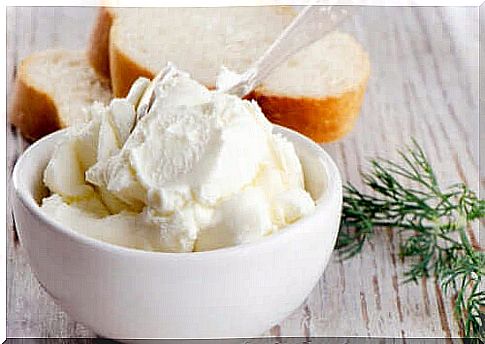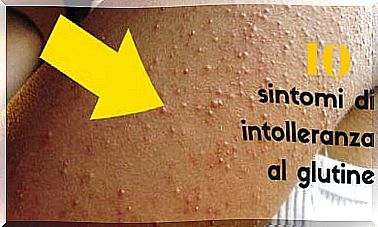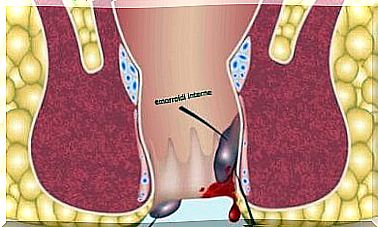Cream Cheese: How Nutritious Is It?

According to the Codex Alimentarius, cream cheese is a soft, spreadable, non-ripening and rind-free product that, thanks to its texture, can be easily mixed with other foods. Its high fat content, however, makes it a dairy product compatible with healthy diets.
Nonetheless, milk fat may offer some not particularly advertised benefits, which we will see later. In addition, cream cheese and its varieties, such as beaten, double cream, flavored and others, are used in the kitchen in the preparation of desserts and savory recipes, to which they give a unique flavor.
We know that cream cheese is widely consumed for its flavor, versatility and texture. But do you know what you are eating when you consume a portion? Do you know how it is prepared? You will find the answers to these questions and discover its culinary uses.
How is cream cheese made?
As reported in the Journal of Dairy Science , the raw material used for the preparation of cream cheese is made from milk cream or a mixture of cream and milk. The cream is pasteurized and transformed into very small drops of fat. Then the lactobacilli are added which will ferment the cheese and make it more acidic.
The next step is to add salt and some additives, such as gelatin, starches and other thickeners and emulsifiers, guaranteed by the Codex Alimentarius itself. At the end the rennet is added. Foods magazine reports that it is an enzyme of plant or animal origin, which breaks down the milk protein and then begins its coagulation.
Once the mixture has stabilized, it is mixed evenly before being packaged cold or hot. The minimum amount of fat in standard cream cheese, according to the Codex, is 25 grams for every 100 grams of dairy product and 67% water. The other fat values vary according to the preparation.
Nutritional value and quality
The Food Table of the United States Department of Agriculture and INCAP / OPS (the Central American Institute of Nutrition and Panama and the Pan American Health Organization) establish the following values for macro and micronutrients for every 100 grams of cream cheese:
- Water: 54%.
- Fat: 32%.
- Saturated fat: 21.43%.
- Proteins: 7.1%.
- Carbohydrates: 7.14%.
- Calories: 321 calories.
- Vitamin A: 300 micrograms of retinol.
- Riboflavin: 0.20 milligrams%.
- Calcium: 71 milligrams%.
- Phosphorus: 104 milligrams%.
This dairy product has a high fat content, 67% of which are saturated. Compared to other cheeses, it contains less protein, calcium and phosphorus. Provides a good supply of vitamin A.
Light cream cheese contains 67% water, 7.8% protein, 8% carbohydrates and 15% fat. Vitamin A values are lower than traditional ones, amounting to 160 micrograms. Saturated fat corresponds to 9% and calcium to 148 milligrams. Compared to the standard version, it contains 40% fewer calories.

Fatty acids
Most of the fatty acids in milk cream are very small, which promotes their absorption by the intestine. Professor Gaspar Ros says they can be used as a quick source of energy.
One of these is butyric acid, which, according to the journal Nutrición Hospitalaria, is beneficial for the cells of the colon and improves intestinal health.
Types of proteins
The proteins present in the milk cream are casein and whey protein. A group of experts agrees that both have a high biological value, since they contain many of the essential amino acids, such as lysine.
However, their content is not so high that this food is recommended in high protein diets.
Carbohydrates
Most of the carbohydrates present in this product are broken down by lactobacilli added during its processing. According to the magazine Temas Agrarios, these microorganisms transform lactose into lactic acid, preparing the intestine to prevent the growth of bacteria responsible for the onset of diseases.
Vitamins
The main vitamin in cream cheese is vitamin A, which is considered to be of considerable importance for the development of vision, for bone growth and for the immune system.
One serving provides 84 micrograms of retinol, which, according to the journal ALAN, represents 10% of the recommended value.
Minerals
As in the case of other cheeses, calcium and phosphorus are the most abundant minerals in cream cheese, present, however, in lower quantities, since they contain less protein. A 1 ounce (about 28 grams) serving provides just 2% of the recommended amount of calcium.
Calories
Traditional cream cheese provides a very high calorie intake. Spreading a portion of 28 grams on bread or biscuits, we consume 90 calories. We must therefore pay attention to the energy intake that this product introduces into the diet.
How can cream cheese be used in cooking?
The texture and flavor of the cream cheese are the culinary strengths of this delicious dairy product. It can be used in both sweet and savory dishes.
Its most common use is to spread it on biscuits, toast or soft rolls, or to use it as an ingredient for fillings or to accompany baked potatoes or sandwiches.
You can also use it to prepare delicious creamy toppings in place of cream, to be served with pasta, fish, chicken or vegetables. If you combine it with spices, its flavor will be explosive.
In pastry it is perfect for fillings and toppings, such as, for example, for carrot cake. Ice creams also use cream cheese as a base, in combination with different types of fruit. Brownies and cheesecakes acquire more character when made with this product.
As Brighenti and other researchers point out, the characteristics of cream cheese make it perfect for improving the texture of a food. Thus, adding 2 tablespoons to the puff pastry and focaccia dough make these two recipes softer and tastier.
Thanks to the cream cheese, you can push yourself to dare anything in the kitchen. For example, cream cheese will add stickiness to a fruit or vegetable smoothie. All you have to do is let your imagination fly and the product itself will do the rest.
Benefits of cream cheese
In addition to the nutritional intake it provides, cream cheese offers some benefits which we will discuss in the following lines.
It is a potential probiotic
According to the World Organization of Gastroenterology, probiotics are microorganisms capable of improving intestinal health and immune function.
According to the Revista de Ciencias Biológicas y de la Salud, this cheese ferments thanks to some lactobacilli that can perform a probiotic function and are considered safe.
Some studies show what are the results that are obtained by using Lactobacillus casei as a probiotic in cream cheese, obtaining a product of excellent quality.
Cream cheese is low in lactose
Many people cannot tolerate lactose, due to the lack of a digestive enzyme that has the task of breaking it down in the intestine. In these people, its intake causes abdominal distension, gas and diarrhea. However, it is made clear in the Nutrients magazine that some intolerant people accept less than 12 grams of lactose per day.
One ounce of cream cheese contains up to two grams of lactose. As long as you don’t overdo it, there’s no reason why it should cause problems in lactose intolerant people. However, further studies regarding its effect on this type of patients are needed.
It is a source of antioxidants
Astiasarán y Martínez report in the pages of their book that milk fats contain carotenoids, such as beta-carotene, lutein and zeaxanthin.
Young and Loug talked about their antioxidant activity, since they block the action of free radicals and their possible cell damage. Some carotenes have a direct effect on vision health.

Contraindications of cream cheese
Are there any contraindications regarding this food? Apparently, yes. In the following lines we mention some of them to which it is good to pay attention.
Low-protein dairy product
A normal serving of cream cheese provides only 2 grams of protein. So unlike other cheeses, such as goat or cheddar, which contain 7 grams per serving, it is not recommended in high-protein diets.
Cream cheese is a source of saturated fat
Cream cheese contains high values of saturated fat. A serving of 28 grams covers 30% of the daily value, in the context of a consumption of 2,000 calories.
The World Health Organization (WHO) indicates to reduce the intake of saturated fat to a proportion of less than 10% of total calories, in order to prevent the appearance of chronic diseases.
High-calorie food
Cream cheese is very caloric and must therefore be consumed with caution in diets to lose weight. Care must be taken when consuming recipes in which it is used as the main ingredient. It is recommended to replace it with light or low-fat cream cheese.
Very short useful life
Although cream cheese is pasteurized and destroys pathogenic microorganisms, Choi and other authors say its high water content can increase the risk of contamination and shorten its commercial life.
According to some evidence, cream cheese has an average life of 2 weeks and, once the package is opened, it must be stored in the refrigerator.
Is cream cheese nutritious or not?
The culinary properties of cream cheese, as well as its uses, which give life to a wide range of flavors in different recipes, are indisputable. But is this cheese nutritious?
Used in moderation, it turns into a good source of energy and low-lactose vitamin A. The traditional cream cheese high in saturated fat and calories can be replaced by other light versions, so that it can become part of healthy diets.
The inclusion of probiotic bacteria as part of its preparation could also make it more competitive in the health-promoting dairy market, but more studies are needed in this regard.









